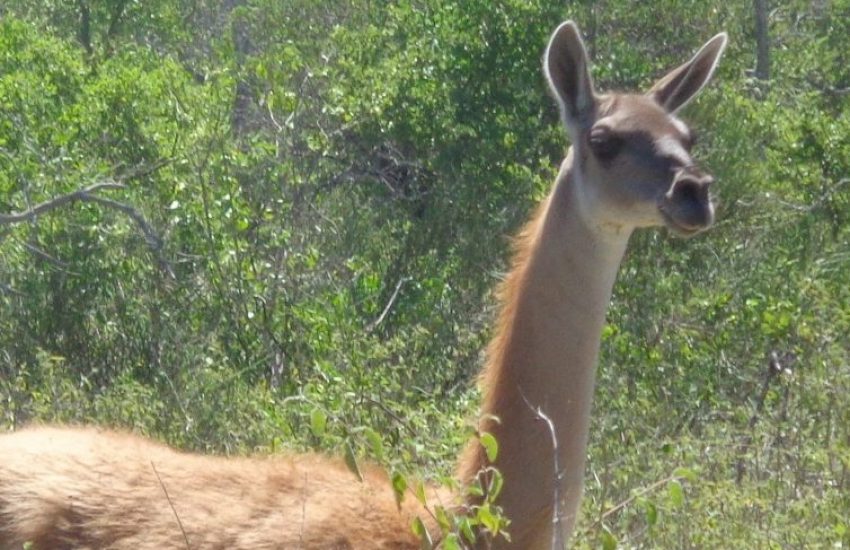Bird Brewery supports the Indonesian maleo via the…
03 April, 2025

Bird Brewery supports the Indonesian maleo via the…
03 April, 2025
Restoring the natural Queen Conch population in the…
31 March, 2025
Thursday 11 july 2019
Header photo: (c) Fundacion Natura Bolivia
The new law was adopted last week, and follows the earlier decision of the Indigenous Autonomous Government of Charagua to declare Ñembi Guasu, an area of 1.2 million hectares, a conservation area.
The law is the result of a broad participatory process, involving 30 communities and around 80 farmers. ‘The involvement of all these actors is crucial to ensure that the protection of guanacos goes beyond legal protection, but that the population gets the opportunity to truly recover,’ says Sander van Andel, Senior Expert Nature Conservation at IUCN NL. ‘The farmers have agreed to set aside part of their plot to ensure a corridor along which the guanacos can migrate. The communities also respect that parts of the territory are intended for the preservation of the guanaco and therefore cannot be used for other purposes.’
The process was guided by IUCN NL partner organization Fundación Natura Bolivia, with support of IUCN NL, World Land Trust, Nature and Culture International, United Nations Development Programme and Conservation International.
The newly declared ‘Area de Vida Guajukaka’ (Guanaco area of life) is the fourth nature reserve on the territory of the Guaranì, , the Indigenous group governing the Charagua Iyambae district. These four connected areas (National Park Kaa Iya, National Park Otuquis, Ñembi Guasu conservation area and the ‘Area de Vida Guajukaka’) ensure a corridor of protected forest.
The Guaranì decided to dedicate around 70% of their territory to nature conservation, the remaining 30% is employed for economic activities.
In neighboring Paraguay, the state of the guanaco is even more worrisome than in Bolivia. With a population of only 50, the species is Critically Endangered. With support from IUCN NL in strategic partnership with the Netherlands Ministry of Foreign Affairs and WWF Netherlands, civil society organisations from both countries joined forces to protect the guanaco and other iconic species, such as the jaguar, puma, giant anteater, pampas fox, Geoffroy’s cat and collared peccary.
‘Our partners Fundación Natura in Bolivia and Guyra in Paraguay have installed camera traps to collect information on the presence and habits of these species. The information these camera traps reveal informs a joint action plan to protect these iconic species,’ Van Andel explains. ‘The ultimate goal is to create a transboundary nature reserve to protect these species.’
03 April, 2025
Bird Brewery, a brewery with a heart for nature and birds in particular, will once again support the Land Acquisition…
31 March, 2025
The Curaçao Sea Aquarium has a Queen Conch Hatchery that hopes to conserve the species by breeding juveniles that they…
